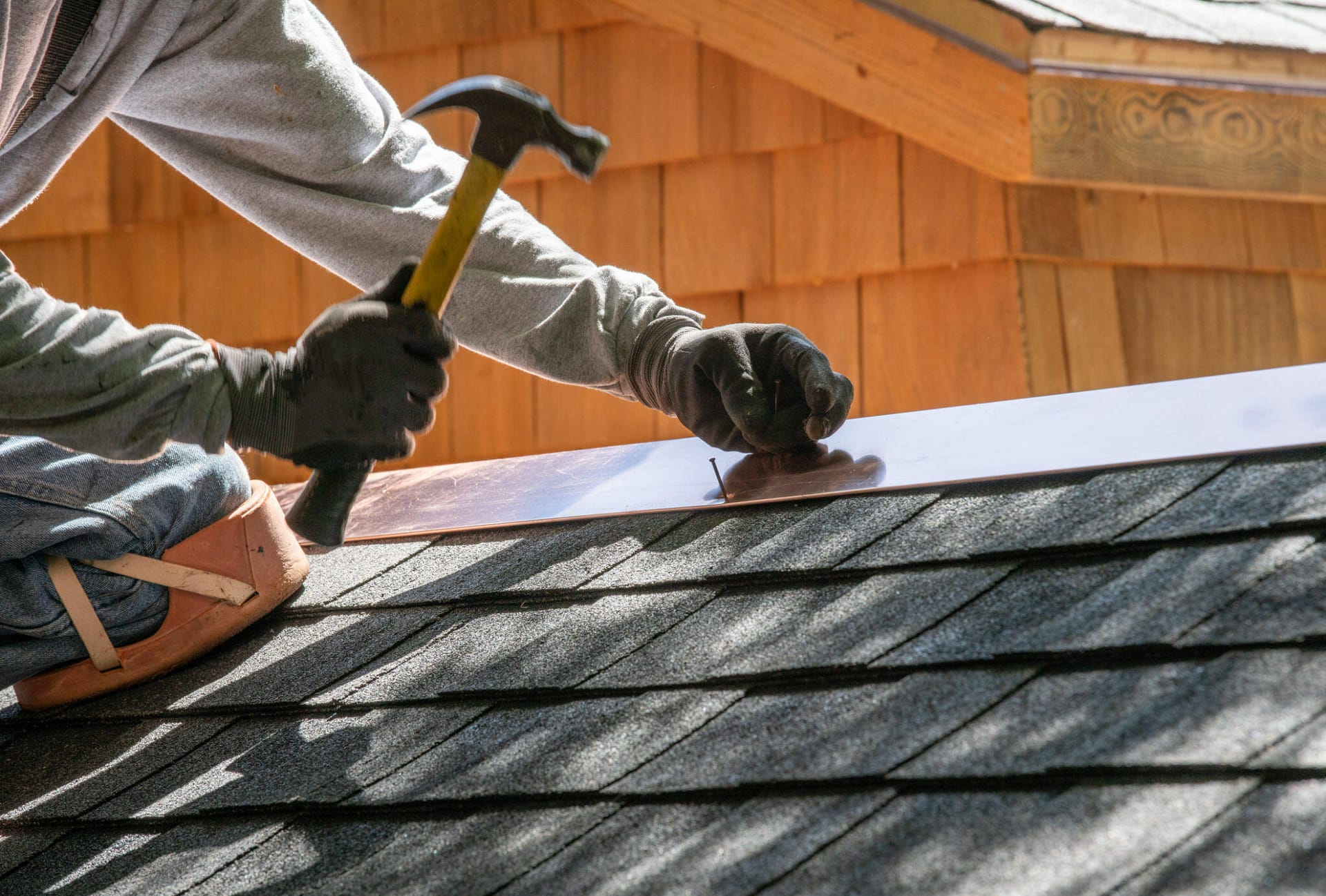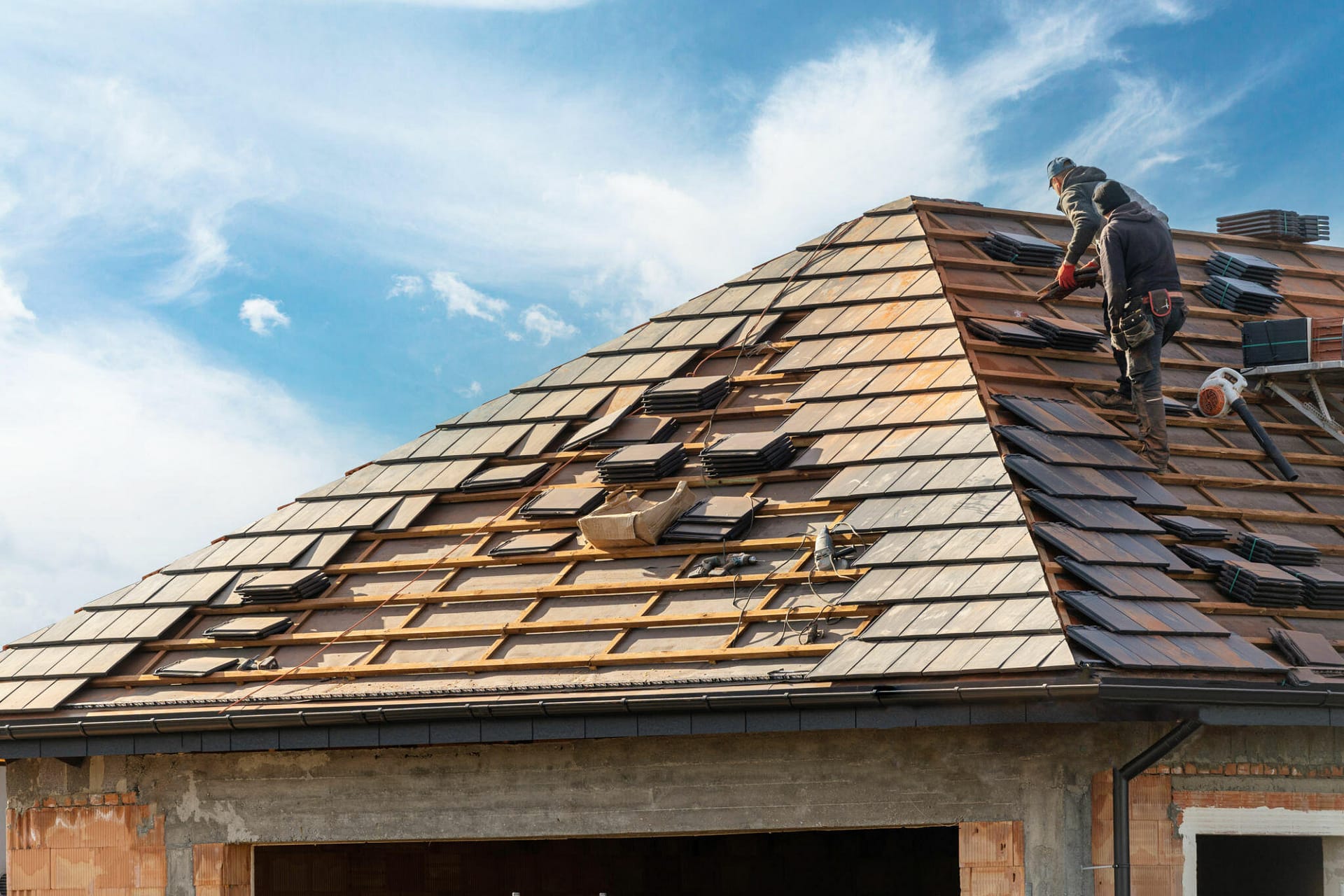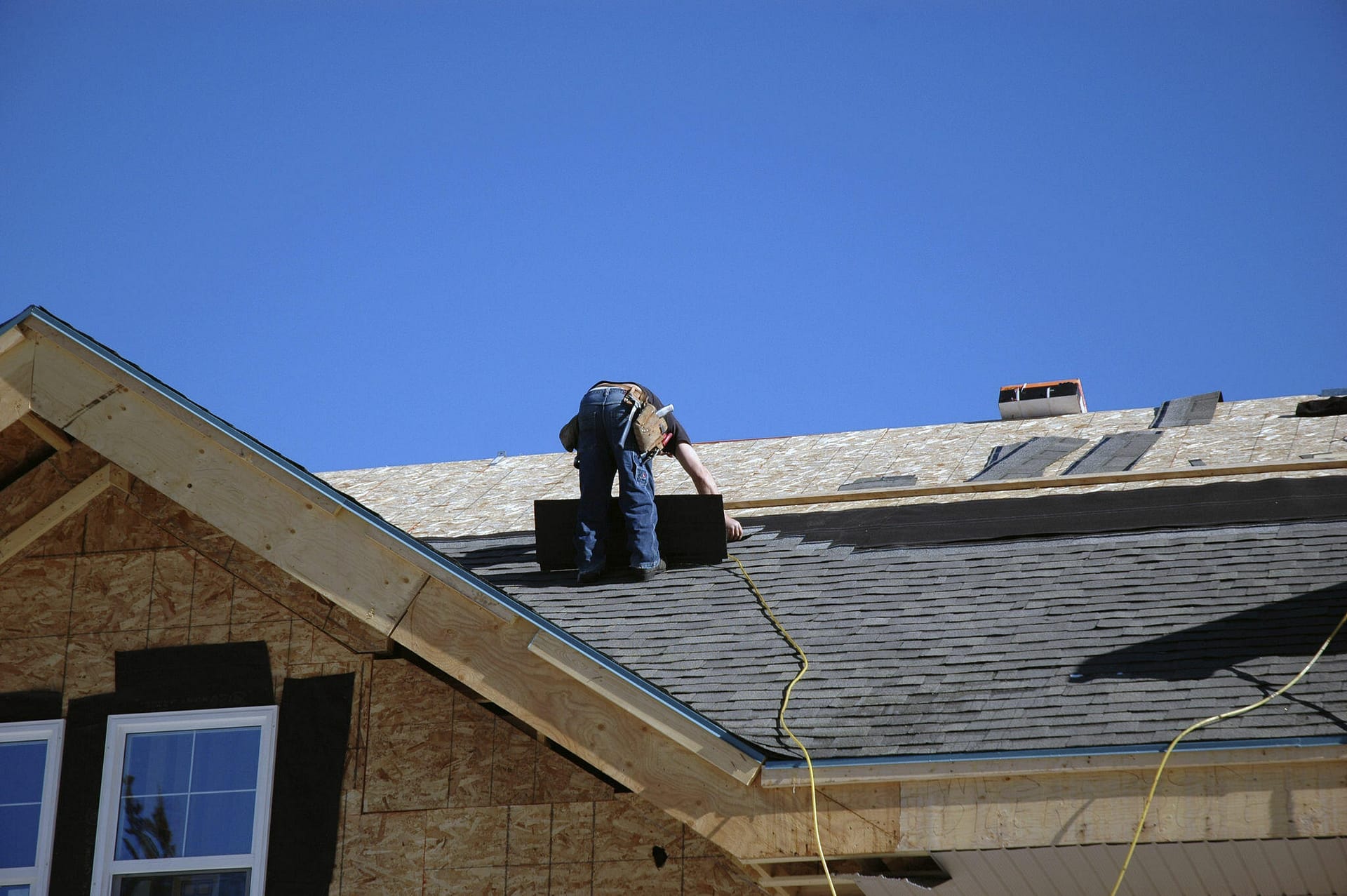Know the wanting signals before its too late!
The following information will help you work through the roofing evaluation and contractor selection process. Watch for these warning signs to know if your roof is failing:
Inside your home
Very often, the first sign of roof failure is not on the roof itself but inside your home. Ceiling stains; flaking paint and plaster, peeling wallpaper, and discoloration near the wall/ceiling joint. They may appear negligible but serve as advance warning of future roofing problems. Stains may be caused by condensation in the attic or water seeping through the shingle covering; very often at joints and flashings in the roof.
In the attic
The attic space must be adequately ventilated and insulated; otherwise; condensation of interior moisture will occur. This will lead to ceiling stains or water leakage. After a heavy rain, check the attic for wet, darkened or stained decking and rafters. Moisture condensation may also accentuate any curling and clawing of the shingles
on your roof. Also, wet insulation loses its effectiveness with a consequent increase in heating costs.
On the roof
If your roof is more than ten years old, it is time to begin routine visual inspections. Inspections should be done twice a year in the spring and in the fall. Much can be seen from the ground. If you do go up on the roof, be sure it’s dry. Wear rubber-soled shoes for best traction and to avoid damaging the shingles. If you are uncomfortable with the idea of climbing the roof but suspect problems exist, call in a professional. Look for any of the following signs of weathering, all of which serve as indicators that your roof needs help:
- Bare spots – The protective granular surface of shingles wears off as the asphalt, into which the granules are embedded, begins to harden over time. Bare spots are often accompanied by fine fissures on the shingles’ surface and by the accumulation of granules in the gutters.
- Broken shingles – Damage can be caused by extreme wind conditions. Since shingles are supposed to shed water. Broken, torn or missing tabs become obvious entry points for water especially on low slope roofs where run off is slower and at the peaks of the roof where shingles are the most vulnerable to high winds.
- Buckling – Buckling is a visible distortion or waviness in the horizontal lines of shingles; and usually runs in a straight line up the roof slope. Shingle tabs become exposed to wind and can be torn off. Very often; the problem is warping in the roof deck caused by poor attic ventilation. The use of thinner than recommended plywood and other non-plywood materials adds to the problem.
- Curling – The upward curling of shingle tabs makes them highly susceptible to wind damage. This is a problem on older roofs where moisture build-up in the attic affects the underside of the shingle.
- Clawing – This is the curling under of the shingle tab’s bottom edge and is part of the normal ageing process of shingles. The bulge created is susceptible to substantial damage by wind action.
- Flashing – Many problems occur at the flashings around vents, soil stacks, chimneys and vertical wall joints. Is the flashing cracked? Is the caulking around the flashing dried out? Are the shingles that lie over the flashing in good shape? It is easy to repair most of these problems; but folly to believe repairs can be put off indefinitely.
Why do I need a new roof if it’s not leaking now?
Your roof has a limited life span and to exceed that will only lead to bigger and more expensive repairs or replacement. For example, shingles that are exposed to the elements beyond their normal life span may have
the edges curled. Once this occurs, the existing shingles may have to be removed – which is a more costly roof
job. Another way to tell if you need a roof is whether or not your neighbors are getting their roofs replaced.
If your homes were built about the same time, they should need replacement about the same time —
this is not always true but is a good indicator.
How do I determine if I need a new roof or repairs?
The first step in the re-roofing process is to determine whether or not you need a new roof in the first place.
The following “warning signs” will help you identify the potential for roof failure. Consider however that it is not the best of policies to wait until the last minute before making the move. To be sure, call in a qualified roofer.
He will check out the shingles, the flashings and the attic ventilation and then recommend remedial action
that should be taken if necessary.
What criteria can I use to decide if the contractor is a true professional who will stand behind his work?
While there is no single clear-cut answer, there are a number of indicators that you can look for when going through the evaluation process. First, select a list of contractors; establish an appointment with each one
and allow yourself one hour to sit down with each contractor.
You might be speaking with a salesperson or the owner of each firm. Both of you need time to ask
questions and explore the possibilities. You will be surprised at how many options you have.
Request either a job proposal or an estimate from each roofing contractor. Estimates and proposals
can be very different approaches to your job.
What is an estimate?
To simplify: an estimate will typically offer a single price, a generically described product, a color
and no options. This is traditional and legitimate. But it isn’t consumer friendly.
What is a proposal?
Simply put, a proposal is a tentative agreement for a project. It offers a choice of products by brand name,
prices, services and even designs. Many other provisions may also be included such as change order
conditions and financing options.
With a proposal, the owner should expect three product choices. These could be presented in the typical range
of good, better and best. Appropriate product literature and samples should also be offered. In conclusion,
a proposal is consumer-friendly.
What about contracts?
Most contracts for roofing work are simple and straightforward. The larger or more experienced contractors
may have longer, more detailed contracts. Regardless of the form of the agreement, you should read all
of the specific items in the contract carefully.
Misunderstandings are more often the cause of contract disagreement rather than
actual dishonesty or incompetence.
It is in your interest that certain items which are important to you be stated in writing in the contract.
The following are some of the basics that should be covered:
Compliance with local ordinances
Will they be observed? Are permit costs included? Who will obtain the permit? What about provisions
for posting zoning notices? Have inspections been planned?
Product choices
Have you been offered a choice of shingles? Are they identified by brand and manufacturer name?
Is there a clear reference to the warranty which will cover the shingles to be applied? Is the
manufacturer’s name for the color of the shingle you are buying stated in the contract?
Scheduling
Start and stop dates are difficult to pin down due to the unpredictability of the weather. But you can control exceptions. For instance, negotiate a “no-later-than” clause. Be reasonable, but do make it clear that these terms will be enforced if necessary. If early completion is important, offer an award for completion by an early date in addition to a no-later-than clause.
Right-to-rescind
This clause establishes a time period in which the homeowner can cancel the contract without penalty.
Some states require such a clause in contacts. Check with your local authorities. Three days is usually the time period given for a right-to-rescind without penalty. If the homeowner cancels the job after the right-to-rend period has elapsed, then the contractor may request a certain dollar or percentage value of the contract in return.
Manufacturer’s warranty specifications: confirm that the Agreement states that all workmanship will conform to the requirements of the manufacturer’s warranty. Especially take note that this includes ventilation requirements, fastener requirements and low slope installation terms. All such terms are normally found on the shingle packaging, or will be found on manufacturer’s literature available from suppliers.
Contractor’s workmanship warranty
Make sure this is clearly noted in the contract.
Clean-up
Call for a daily clean-up of the premises. This becomes very important if shingle tear-off is necessary.
Payment Terms
Schedule, terms and method of payment should be written out fully with no room for misunderstandings.
Preliminary Inspection
Finally, agree to an inspection before the job with the job supervisor. Establish the condition of the
property before any work is done. Take special care to list the conditions of landscaping and equipment
located under or near the roof eaves. Prepare a checklist as you go and co-sign it, indicating that both
parties understand the present condition of the property. A thorough inspection after the job will
determine if any valid property damage claims exist.
In conclusion…
Remember this: a contractor is also shopping for good jobs that will make a fair profit and bring future referrals. Many contractors have had experiences with unreasonable or dishonest homeowners. Therefore, they look for warning signs of customer problems during the initial job interview.
Show the contractor that you are an informed consumer who has both your and his best interests in mind. Here’s how you can get a roofing contractor to respond to your call:
When you call a roofer, tell him you are shopping around, but are only interviewing three contractors; not 10. Call contractors in the general vicinity. Roofers prefer to work close to home, just like everybody else. Tell the contractor that you are not looking for the lowest bid, but rather the best value. And ask for a Good-Better-Best proposal. If you have seen work by a contractor in your neighborhood and you liked it, or if someone referred
a contractor to you, call him and when you do call, mention how you received the contractor’s name.
As an educated consumer, please keep us in mind when you start your search for a roofing contractor!
Thank You!





